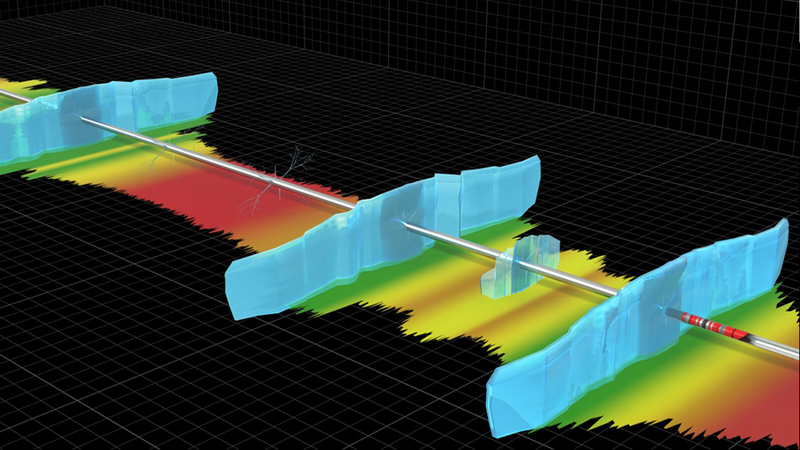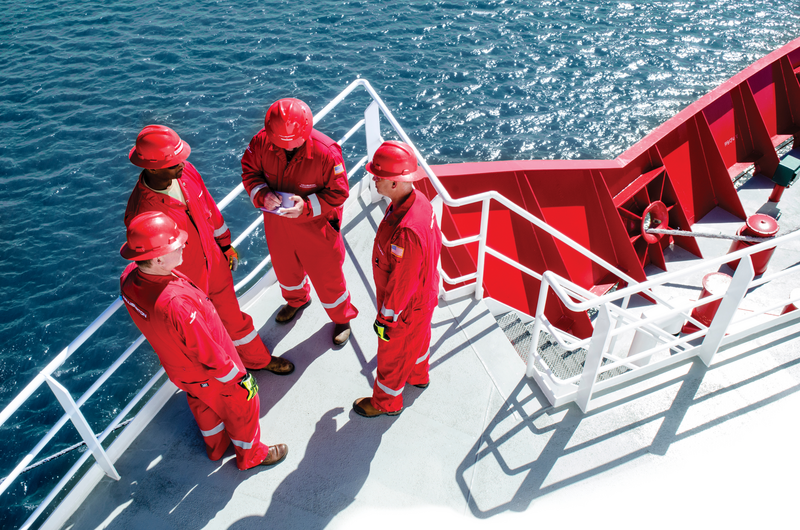 Search
Search
 Search
Search
The RMT-I™ pulsed-neutron tool accurately helped assess unconventional reservoir gas productivity
Download PDFUnconventionals

Determine unconventional reservoir gas productivity for Tecpetrol SA

Neuquén Basin, Argentina

As part of an integral plan to develop the Vaca Muerta Formation in Neuquén Basin, a vertical well was evaluated in the northeast sector of the “Fortín de Piedra” area to determine unconventional reservoir gas productivity.
The Neuquén Basin is located in South America, specifically in west central Argentina. Extending over a total area of 66,900 m2, the basin is bordered on the west by the Andes Mountains and on the east and southeast by the Colorado Basin and North Patagonian Massif. The sedimentary sequence is comprised of complex continental and marine sequences of the Late Triassic to Early Cenozoic strata.
The Neuquén Basin is a major oil and gas production area for conventional and tight sandstones, and is becoming a major site for unconventional reservoir development in South America. The Vaca Muerta Formation has Late Jurassic to Early Cretaceous transgressive deposits, covering an extension of 30,000 km2 and a thickness ranging from a few feet or totally absent at the south and east to 1,000 ft toward the north and west. This corresponds to a series of rock with high organic content and adequate maturity that generated great amounts of hydrocarbon—light oil and wet and dry gas.
The key to successfully completing Vaca Muerta shale reservoirs is targeting intervals with superior reservoir and completion quality; however, these so-called shales are more than just fine-grained sedimentary rocks with a high content of organic matter. Rather, these organic mudstones are typically a complex mineralogic assemblage that is heterogeneous at fine scale and behave very differently geomechanically.
Tecpetrol S.A. planned hydraulic stimulation services using multiple stages to increase hydrocarbon production. Complications during the casing cementing job led to high uncertainty in cement integrity and zonal isolation. Tecpetrol needed a way to ascertain stimulation effectiveness by accurately determining the location and concentration of proppant behind casing. In addition, due to environmental concerns, a method was needed that was environmentally friendly and did not require additional equipment or permits.
Halliburton recommended using the Reservoir Monitor Tool-I (RMT-I™) pulsed-neutron tool for evaluation and CARBONRT®* inert tracer proppant for stimulation. CARBONRT ceramic proppant is tagged with an inert gadolinium tracer that is an environmentally safe alternative to radioactive tracers, and it does not require special proppants or additional equipment. The RMT-I pulsed-neutron tool was logged before and after stimulation to measure proppant concentration and distribution. In addition, the RMT-I tool provided multiple independent measurements, such as sigma decay, gadolinium yield, and counts that lead to reduced uncertainty in the interpretation.
The well was hydraulically stimulated with CARBONRT proppant in two main stages. The lower stimulation job was successful with proppant concentrations clearly showing successful frac propagation above and below the perforation zone. The upper stage, however, was not as successful, and proppant was found to have traveled in small concentrations due to poor cement integrity. The RMT-I spectral analysis clearly showed the results of the stimulation job with high confidence for both successful and unsuccessful stimulation jobs.
*CARBONRT® is a registered trademark of CARBO

The Reservoir Monitor Tool 3-Detector™ (RMT-3D™) pulsed-neutron tool solves monitors reservoirs to increase production, improve recovery, and find bypassed pay.

Halliburton formation evaluation services enhance reservoir understanding through our technology and subsurface characteristics for resource development.
